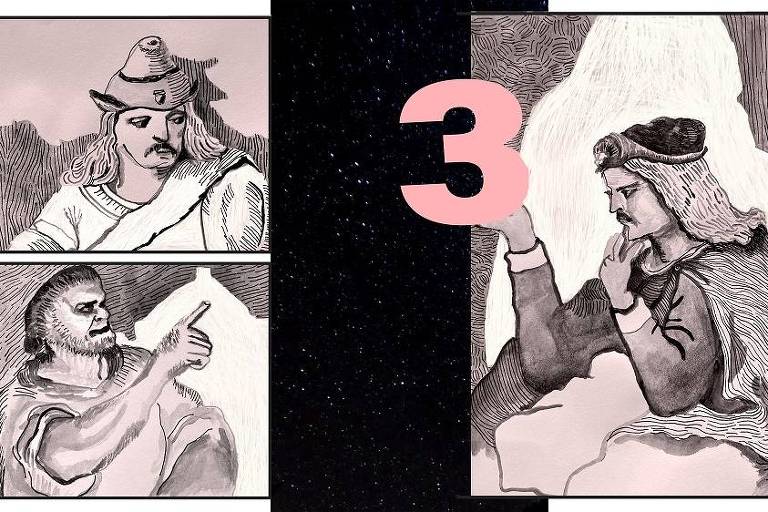The set of all numbers is infinite, and there are numbers as large as we want them to be. What do you do with these brilliant gentlemen? Does the world need such large numbers?
One way to know that the set of all numbers is infinite is to assume the opposite. Let’s imagine that the set of all numbers is finite. If so, then there will be a number greater than all the other numbers. Let’s add 1 to this fellow. The result will be a number that was not in the All Numbers Drawer (simply because it is greater than their “biggest” number). Now, that’s ridiculous! And then? When we assume that the set of numbers is finite, we get a false result. So the assumption is wrong, and there are infinite numbers.
The upshot of this argument is that there are as many numbers as we want them to be. But here’s the beauty of mathematics: we don’t have to resort to larger and larger numbers to see that they are infinite. There are infinite numbers between 0 and 1. The mean between 0 and 1 is 1/2. The average between 0 and 1/2 is 1/4. Repeating this calculation about ten times, we arrive at 1/1024. And continuing indefinitely, we get infinite numbers between 0 and 1 – smaller and smaller. It’s a simple exercise, but there’s just something wonderful about it when you first do it. Let’s go back to the very large numbers.
It is estimated that the human body contains about 31 trillion cells. In scientific notation write 3.1 x 1013 cells. The number of stars in the universe is estimated to be about 50 sestillion, or 5 x 10.22. The number of atoms in the observable universe would be approximately 100 billion, or 1 x 10 .80. And the most interesting question: why do we use numbers greater than the number of atoms in the universe? Is there anything so amazing that it justifies using numbers greater than the global quantity for the smallest unit of things?
Well, of course mathematics guarantees us the positive answer. Let’s look at the number Pi. We know that Pi is a number close to 3; What does it have to do with large numbers? Simple: Pi has No final Decimal places! There are more decimals in Pi than there are stars in the sky. Or atoms in the universe. It is eternity after the comma. Getting as many decimal places as possible from Pi is getting to know an important component of science better and better. Whether to estimate the diameter of the Milky Way with the accuracy of a hydrogen atom, or to prepare us as a civilization for the challenges ahead. Curiosity: The sequence of decimal places in Pi is infinite and does not repeat; Therefore, it is possible to find the birthday of any person there.
Although (very) tempting, associating Pi with very large numbers can be deceiving. After all, any liter of gasoline costs more than two Pi. Let’s build courage and face very large numbers!
Several centuries ago, mathematicians Marin Mersenne and Pierre de Fermat used to write letters to each other. In one, Mersenne could have asked Fermat to factor the number 100895598169—that is, to find the numbers that result in multiplying 100895598169, provided that these numbers are prime. Fermat kept the conversation going smoothly and replied: The number proposed by Mersenne can be written as the product of the primes 112303 and 898423. At first glance, these are not small numbers. But when it comes to cousins, things are more subtle.
Currently, a relevant arithmetic effort is devoted to finding new primes, as there are an infinite number of them out there. The newest cousin discovered would not fit into this post. It’s number 28258993-1, which contains 24862048 digits. That is, there are almost five times as many numbers in this number as there are in a version of the Bible, in any language.
In scientific notation it is written as 1.4 x 1024862046! Therefore, there are more numbers in the latest known prime number than there are atoms in the universe or stars in the sky. And the? In theory at least, knowing large prime numbers can be useful to obtain personal data – such as credit card numbers – safely.
Whether it was huge or small numbers, or even the distance between one prime number and the next: if Hamlet had taken a course in number theory, he might have told Horace that there is much more to mathematics than there is between heaven and earth.
*
Edgard Pimentel is a researcher at the Mathematics Center at the University of Coimbra and a professor at PUC-Rio University.
Participation In the Serrapilheira newsletter to keep up with more news from the institute and from the Ciência Fundamental blog.
Current link: Did you like this text? A subscriber can unlock five free accesses to any link per day. Just click the blue F button below.



![[VÍDEO] Elton John’s final show in the UK has the crowd moving](https://www.lodivalleynews.com/wp-content/uploads/2023/06/Elton-John-1-690x600.jpg)


More Stories
The Director of Ibict receives the Coordinator of CESU-PI – Brazilian Institute for Information in Science and Technology
A doctor who spreads fake news about breast cancer is registered with the CRM of Minas
The program offers scholarships to women in the field of science and technology